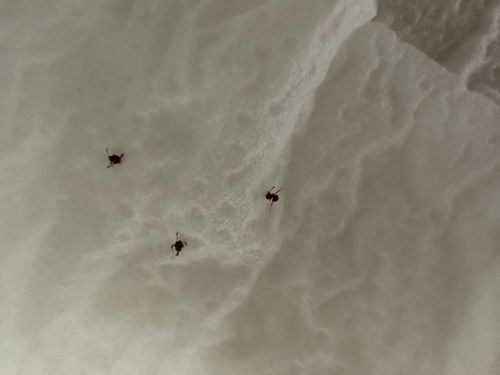Tick (likely Deer Tick or Blacklegged Tick)
Scientific Name: Ixodes scapularis (most common species matching description)
Order & Family: Parasitiformes, Ixodidae
Size: Unfed adults typically 2-3 mm; nymphs less than 1 mm; larvae less than 1 mm. Engorged ticks can be up to 10 mm.

Natural Habitat
Wooded areas, tall grasses, brush, leaf litter. They thrive in humid environments.
Diet & Feeding
Blood of mammals, birds, and sometimes reptiles and amphibians. They are obligate hematophages, meaning they must feed on blood to survive and advance through their life stages.
Behavior Patterns
Ticks undergo a four-stage life cycle (egg, larva, nymph, adult). Each active stage requires a blood meal. They do not fly or jump, but rather 'quest' by climbing onto vegetation and waiting for a host to brush by. They detect hosts using carbon dioxide, body heat, and vibrations. They embed their mouthparts into the host's skin to feed.
Risks & Benefits
Risks: Ticks, especially Ixodes scapularis, are vectors for several diseases, including Lyme disease, Anaplasmosis, Babesiosis, and Powassan virus. Their bite itself can also cause local irritation or allergic reactions. Benefits: In certain ecosystems, they can be a food source for some birds and small mammals, but their overall ecological benefit is often outweighed by their role as disease vectors.
Identified on: 11/9/2025